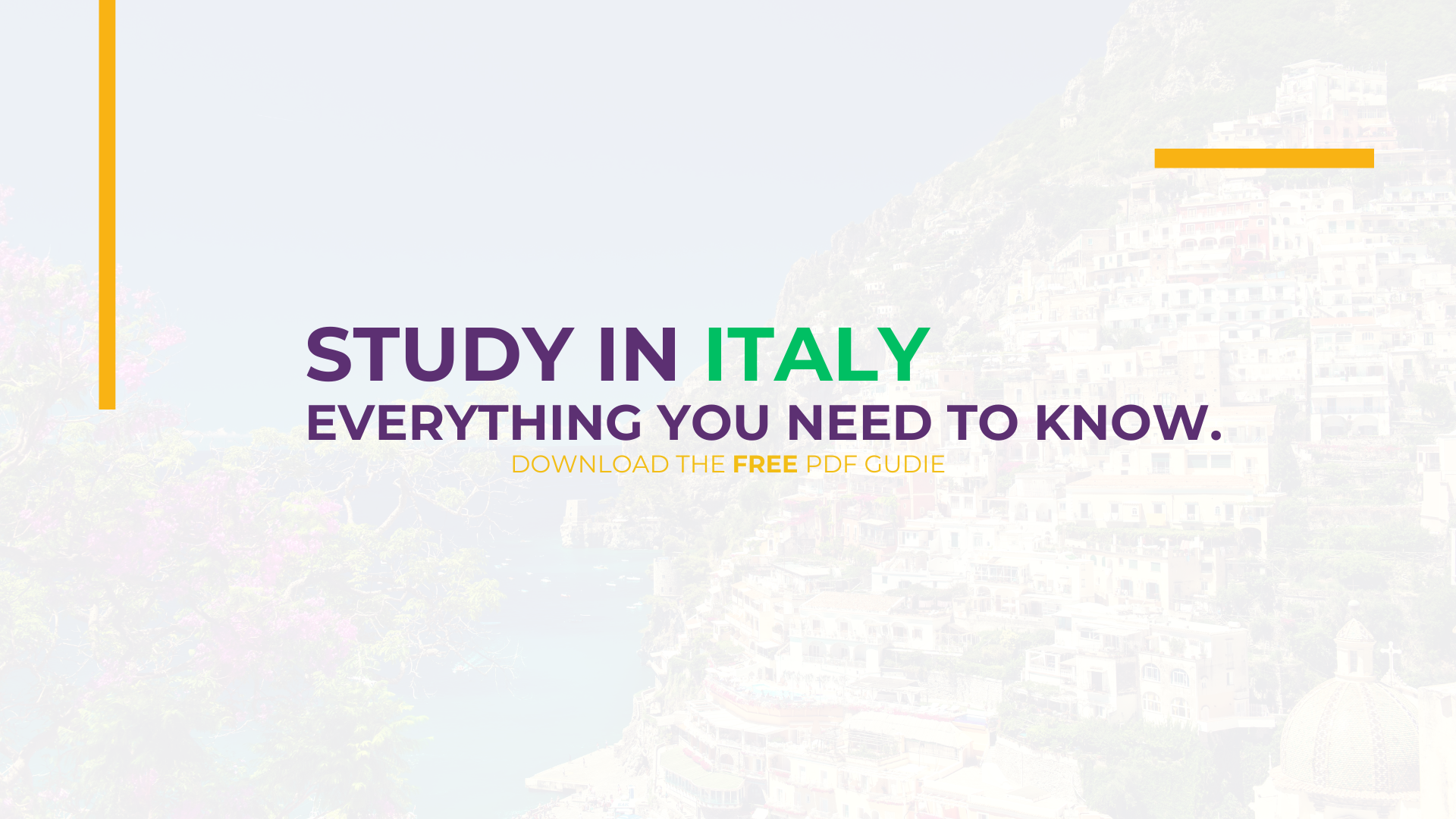Table of Contents
Why Study in Italy?
Italy is home to some of the world’s oldest and most prestigious universities, including the University of Bologna (founded in 1088). International students benefit from:
- Affordable tuition fees compared to other European countries
- High-quality education in various disciplines
- Scholarships and financial aid opportunities
- A rich cultural experience and historical landmarks
- Networking opportunities with global students and professionals
Choosing a University and Program
Before applying, research and select a university that aligns with your academic and career goals. Some top universities in Italy include:
- University of Bologna
- Sapienza University of Rome
- Politecnico di Milano
- University of Padua
- University of Milan
Most universities offer courses in both Italian and English, so check the language requirements before applying.
Application Process for International Students
The application process consists of several steps:
Step 1: Pre-Enrollment
- Contact your chosen university and check the application deadline.
- Submit required documents, including:
- High school diploma or bachelor’s degree (translated into Italian if required)
- Passport-sized photograph
- Grades from the last three years (Grade 10, 11, and 12) – optional
- CV and Motivation Letter
- Language Certificate (if required)
- DOV/CIMEA
Pre-enrollment typically starts around March–May.
Step 2: Declaration of Value (DOV) or CIMEA
- DOV (Declaration of Value): Issued by the Italian Embassy in your home country, this document verifies your qualifications.
- CIMEA: An alternative evaluation that can be done online.
Both are necessary for university admission but not required for a visa.
Language Requirements
Depending on your chosen program, you may need to demonstrate proficiency in Italian or English.
English Language Requirements
- B2 Level (Common European Framework of Reference)
- Accepted Tests: IELTS (5.5–6 bands), TOEFL
Italian Language Requirements
- B2 Level (for Italian-taught courses)
- Accepted Tests: PLIDA, Prova di Lingua
Some universities may conduct their own language proficiency exams, or may accept the student to enroll without the certificate if the student studied in this language at high school or University for 1 year at least.
Entrance Exams
Certain programs require entrance exams, particularly in:
- Medicine and Surgery
- Dentistry
- Veterinary Science
- Engineering
- Pharmacy
Common Entrance Exams
- IMAT (International Medical Admissions Test)
- Prova di Ammissione (For Italian-taught programs)
- TOLC (For Engineering, Medicine, and other programs)
Entrance exams are not available online, and students must travel to Italy or an approved location to take them.
Scholarships and Financial Aid
Italian universities offer merit-based, need-based, and government-funded scholarships.
Popular Scholarships
- DSU (Diritto allo Studio Universitario), ERGO Etc.
- Erasmus+
- Regional Scholarships
- University-Specific Scholarships
Scholarship Coverage
- Tuition fee reduction or exemption
- Accommodation
- Monthly stipend
- University cafeteria (mensa) discounts
If you don’t secure a scholarship, you can apply for a tuition fee reduction with the same documents.
Student Visa Application (Type D Visa)
To study in Italy, you need a Type D Long-Term Visa. Required documents include:
- Acceptance letter from the university
- Bank statement showing financial ability (€7,500 per year)
- Health insurance
- Accommodation proof
- Passport and visa application form
- Parent’s income letter
- Motivation Letter (mention your intention to return home after graduation)
Processing times vary, so apply early.
Obtaining a Fiscal Code (Codice Fiscale)
The Codice Fiscale is essential for opening a bank account, renting a home, and other administrative tasks. You can get it:
- At the Agenzia delle Entrate in Italy
- At the Italian Embassy in your home country
- From your university’s administrative office
University Enrollment Process
To complete your enrollment, submit:
- DOV or CIMEA
- Passport and visa
- Language certificate (B2)
- Fiscal Code
- Entrance exam results (if applicable)
- ISEE (for scholarships)
Student Benefits: Card, Bus Ticket & Bank Account
- Student Card: Serves as ID and a bank card in some universities.
- Bus Ticket Discounts: Students can buy monthly (€35) or yearly passes.
- Bank Account: Required for scholarships and university payments.
Renewing Your Student Visa
For visa renewal, you need:
- Fiscal Code
- Visa and passport
- Enrollment certificate
- ISEE (if applicable)
- Health insurance (€150 per year)
- Bank statement
A renewal fee of €130–150 applies.
Permesso di Soggiorno (Residence Permit)
Within 8 days of arrival, apply for Permesso di Soggiorno at the post office (Poste Italiane). The first renewal is required after 1 year, and subsequent renewals every 5 years until permanent residency.
Getting a Residence Certificate & Identity Card
- Residence Certificate: Required to prove your legal stay in Italy.
- Identity Card: Can be obtained after getting your residence certificate.
Apply at the Comune (municipality) office with:
- Passport
- Permesso di Soggiorno
- House contract
- €16 tax stamp (Marca da Bollo)
Police may visit your home to verify your address.
Cost of Living in Italy
Estimated monthly costs:
- Rent: €300–€600 (depends on the city)
- Food: €200–€300
- Transport: €35–€50
- Miscellaneous: €200+
Milan and Rome are more expensive compared to smaller cities.
Tips for a Smooth Transition
- Book appointments early (Posta, Questura, Comune).
- Always carry copies of important documents.
- Join student communities for support.
- Learn basic Italian for daily communication.
Conclusion
Studying in Italy is an exciting journey, but it requires careful planning. By following this step-by-step guide, you can navigate the application process, secure funding, and enjoy student life in one of the world’s most culturally rich countries.


